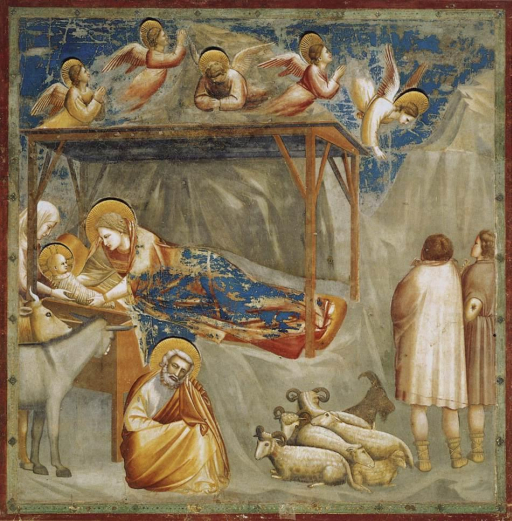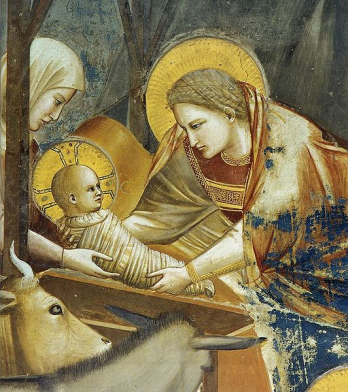 This is another of the beautiful frescoes from the Scrovegni Chapel in Padua. The paintings tell the life story of Christ and this panel (#17) includes a scene from his birth.
This is another of the beautiful frescoes from the Scrovegni Chapel in Padua. The paintings tell the life story of Christ and this panel (#17) includes a scene from his birth.
The frescoes were completed around 1305 by the Italian artist Giotto di Bondone (1267-1357) and were commissioned by Enrico Scrovegni in the hopes of gaining his father entrance into heaven. The senior Scrovegni was a money lender and it was common for families plying less-reputable trades to build chapels to show their family’s piety.
In this section of the frescoes, the midwife, Salome is handing the newborn Jesus to his mother. Mary lies on her side just after giving birth and is perhaps looking into her son’s face for the first time.
Five angels watch over the family as they rejoice in the birth of Christ.
It’s hard to tell whether Joseph has succumbed to exhaustion or is wiping a tear from his cheek. All three members of the Holy family and the angels are shown with a nimbus, the halo artists of the Renaissance commonly used to indicate holy or sacred figures.
Sheep, a goat, a donkey and a cow surround the family as two unidentified individuals stand at the foot of the bedding.
 Much of the fresco has been ravaged by time but this close up of the Virgin mother’s face shows the great detail that Giotto included in his paintings.
Much of the fresco has been ravaged by time but this close up of the Virgin mother’s face shows the great detail that Giotto included in his paintings.
The skin tones of the two women and the level of detail put into the folds of their clothing are something the Italian artist revolutionized. And, while he does make use of gilding to enhance the overall impact of his work, unlike many other artists of his time, even without the gilding this would be a spectacular painting of great beauty.